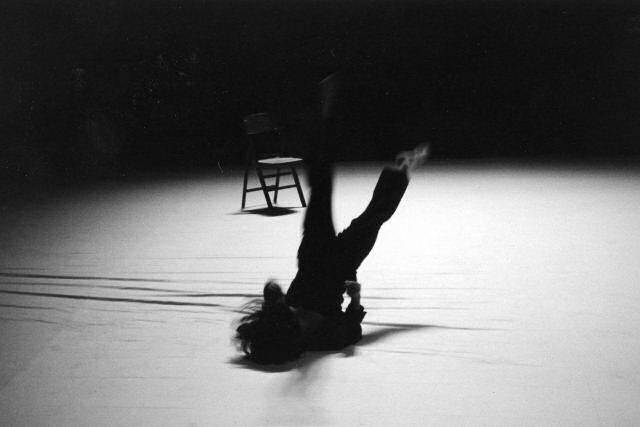
© Laurent Philippe
Rosita Boisseau: Paco Dècina, what motivated this collaboration with photographer Lee Yanor?
Paco Dècina : I had arrived at a time in my career when I wanted to change the support, the décor for my shows. For the last 5 or 6 years, I have always worked on canvases, with very thick materials, colors and a plastic artist called Christophe Desforges with whom I started working in 89.
So the symbolic, physical, scenic places, I will say the space of each creation are very important to me. When I start working, alone in my head, one of the first questions I ask myself is: "what space are we in?" . I have always used canvases because it allowed me to have a more abstract and mobile space, which could at times meet external requirements and, at other times, requirements of interior space. With the thickness of the material and the help of the lights, one could easily pass from one universe to another. The problem is that over the years this instrument got a little exhausted and I felt that I might come across something I already knew and that, at the end of the day, my concern remained only in the color I was going to use. I'm exaggerating a bit... In addition, in my artistic evolution, began to present a requirement of lightness and transparency. When I met and spoke with Lee Yanor, I presented her with this requirement to have a décor closer to the invisible, a décor that was not really made of lights. I am still in a period where I need the trace of the flesh, the trace of gravity, but a gravity that is beginning to become lighter. As soon as we had this intuition, Pompeii, Herculaneum, the cities of Vesuvio arose in my mind, all this volcanic universe in which I was born.
R.B. : So, suddenly, you took Lee Yanor to Naples and that's where you made a load of images and films.
P.D. : We left. We knew we were attracted to these places. What for? We didn't really know it. So we began to look, to walk in the city, in the ruins, and all of a sudden the magic was made: we completely abandoned this intellectual and rational work, forgotten what we were doing there and why; we were seized by the emotion of this memory which resurfaced after so many years of silence.
R.B. : So both photo images that are projected, films that are projected also I believe, on the bodies of the dancers. It is not only the whole scene that is invested as a medium of images but also the dancers' own body. Everything is mobile, everything moves. The title of the show is Five Passages in the Shadows or Transparenze. The transparent aspect. I think you insist a lot on that transparency through the shadows.
P.D. : Yes, I just didn't want to give the term "shadow" a dark, infernal or deadly characteristic. I wanted to give the meaning of the impalpable, the sense of light, of something mysterious. So you can see the shadow in that sense. I wanted it to become brighter and more transparent when it resurfaced. Transparent in the sense that we have the opportunity to pierce these veils of memory and make them tell stories, our history ...
R.B. : It is true that your shows are at first very carrier of images, paintings and therefore, they are often suspended in a kind of weightlessness. There are moments that float. So here, through the creation of Lee Yanor, do you get to a little more lightness, what you seem to be looking for, and how?
P.D. : I think there is a little more levity, I will say, perhaps, that there is more life. Life inevitably leads you to a movement, a sweetness. Life is something flexible, it's like water. Yes, I will say that there is something water in this show so necessarily sensuality, freedom. Of course, we always carry with us the memory of difficulty, suffering, weight, body weight. But I will say that little by little this body weight is starting to lighten. Even the joints: if they speak to us at a time of suffering, there is a distance, there is much more distance, they tell us about this gravity but they are light. They're starting to break free.
Choreographer Paco Dècina and photographer Lee Yanor in Cinq Passages idans l'Ombre at the Forum Culturel du Blancs Mesnils on October 10 and 11 and solo on the tribute to Christian Ferry at the Contemporary Dance Theatre from November 3 to 7 p.m.